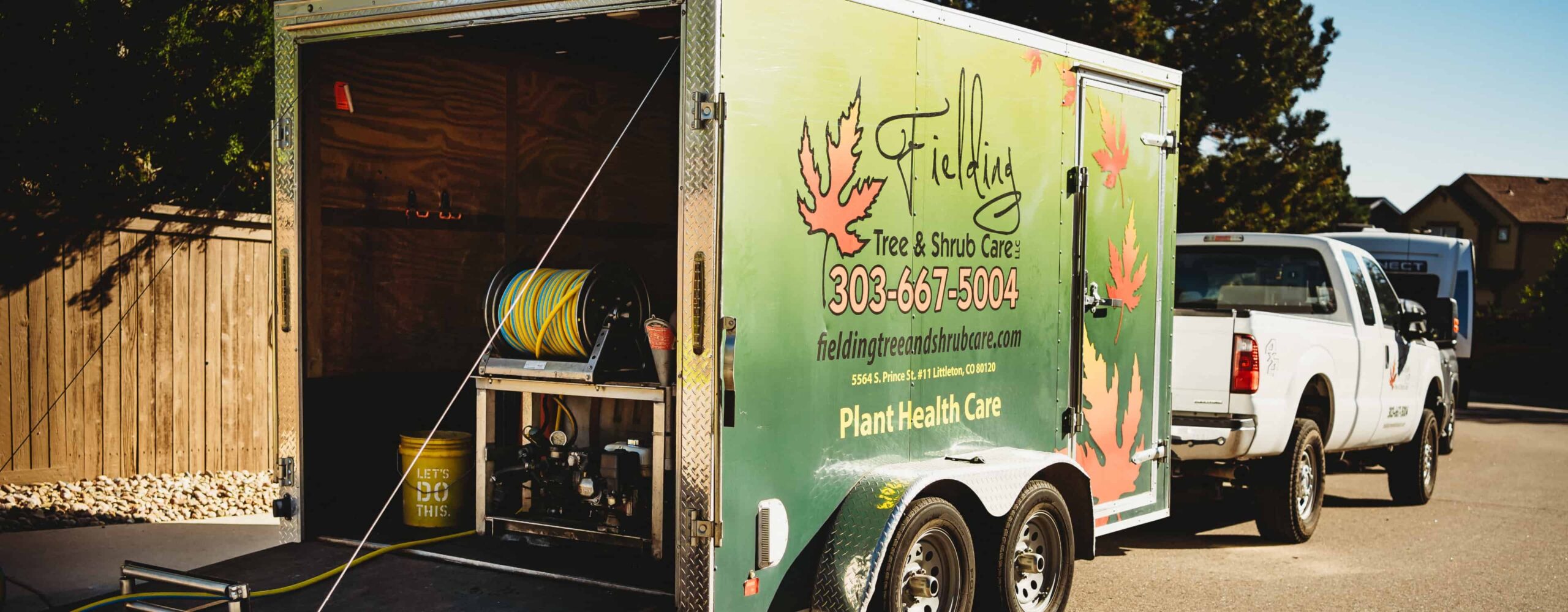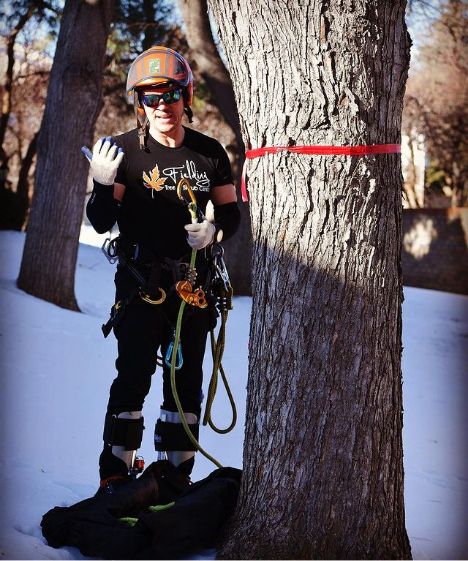Why Do Trees Need Fertilization?
While it’s true that trees in the wild can thrive without human intervention, the trees in your yard don’t have the same natural support system. In forests, nutrients are continuously replenished through the natural decay of leaves, branches, and other organic matter. Yard trees, on the other hand, are often surrounded by lawns or landscaping that prevents the natural recycling of nutrients. Fertilization compensates for this, supplying the essential elements your trees need to stay healthy and grow—a key part of maintaining expert tree care in Denver.
Fertilizing your trees can promote:
- Stronger Growth: Well-fertilized trees tend to grow faster, have fuller canopies, and are more resistant to damage from pests and diseases.
- Increased Resistance: Trees that receive the right nutrients are better equipped to withstand stresses such as drought, extreme temperatures, and insect infestations.
- Improved Appearance: Fertilization helps maintain the rich green color of leaves and encourages the growth of strong, healthy branches.
When Is the Best Time to Fertilize Trees?
Timing is critical when it comes to fertilizing trees. Fertilizing at the wrong time of year or under the wrong conditions can lead to wasted nutrients or even damage to the tree. Here are the best times to fertilize your trees:
- Late Spring: As trees emerge from dormancy and begin their active growth phase, they need nutrients to support new leaf and branch development. Fertilizing in late spring gives the tree the boost it needs for healthy growth throughout the summer months.
- Late Fall: Once trees enter dormancy in the fall, they begin to focus their energy on strengthening their root systems rather than producing new leaves. Fertilizing at this time allows the tree to absorb nutrients and store them in its roots, ready to be used when growth resumes in the spring. This is often considered the most beneficial time to fertilize, as it supports long-term health without stimulating unnecessary leaf growth.
Choosing the Right Fertilizer for Your Trees
Not all fertilizers are created equal, and the type of fertilizer you use can have a significant impact on your tree’s health. Fertilizers are labeled with a ratio of three key nutrients: nitrogen (N), phosphorus (P), and potassium (K). For example, a 20-5-5 fertilizer contains 20% nitrogen, 5% phosphorus, and 5% potassium.
- Nitrogen (N): This is the most important nutrient for promoting healthy leaf and branch growth. It helps trees produce lush, green foliage and is especially important for younger trees that are still establishing themselves.
- Phosphorus (P): Phosphorus supports root development and is crucial for the long-term health of your tree’s root system.
- Potassium (K): Potassium helps trees resist disease and survive environmental stress, such as extreme temperatures and drought.
How Much Fertilizer Should You Apply?
The amount of fertilizer your tree needs depends on its size and the area covered by its root system. The general rule of thumb is to apply 3 pounds of actual nitrogen per 1,000 square feet of soil. Keep in mind that a tree’s roots often extend far beyond the spread of its branches, so you should fertilize a broader area than you might expect.
To ensure the nutrients are distributed evenly, spread the fertilizer in a wide circle that covers 1.5 times the diameter of the tree’s branch spread. For example, if the tree’s branches extend 10 feet from the trunk, you should fertilize an area with a radius of 15 feet.
Signs Your Tree Needs Fertilizing
Not all trees require annual fertilization, and it’s important to assess whether your tree actually needs extra nutrients before applying fertilizer. Some common signs that your tree may benefit from fertilization include:
- Pale or Yellowing Leaves: Trees with nutrient deficiencies often have lighter green or yellow leaves. This may also indicate chlorosis, a condition where trees struggle to absorb essential nutrients like iron. You can read more about chlorosis and its treatment in our “Arborists Glossary of Pests and Diseases”.
- Slow Growth: If your tree’s branches and leaves are growing slowly or not at all, it could be a sign that the soil lacks essential nutrients.
- Dieback: Dead or dying branches, especially at the tips, can indicate that your tree is struggling and may need fertilization.
If you notice any of these symptoms, it’s a good idea to have a soil test conducted to determine which nutrients your tree is lacking. This will allow you to choose the right fertilizer and apply it in the right amounts.
When Not to Fertilize Trees
While fertilization is beneficial for many trees, there are times when you should avoid applying fertilizer:
- Newly Planted Trees: Trees that have been recently planted need time to establish their root systems before they can effectively absorb nutrients from fertilizer. Fertilizing too soon can stress the tree and delay its establishment.
- Trees with Root Damage: If your tree has experienced root damage due to trenching, construction, or other disturbances, it’s best to wait until the roots have recovered before fertilizing.
Fertilizing for Long-Term Tree Health
Fertilizing your trees is an important part of maintaining their health and ensuring they continue to provide beauty and shade for years to come. By applying the right fertilizer at the right time, you can support strong growth, improve disease resistance, and promote overall vitality.
At Fielding Tree Care, we offer professional tree care services, including customized fertilization plans designed to meet the unique needs of your landscape. Whether your trees need a boost in the spring or help preparing for winter, our team is here to ensure they thrive year-round.
Here is an article about why Colorado aspen trees are dying.
For expert advice on tree fertilization or to schedule a consultation, contact us today!






